If you have a gas fireplace in your home, learning more about it is in your best interest. What follows is a brief summary of several gas fireplace safety topics that frequently arise. If you have questions about the operation of your gas fireplace, stove, insert, or logs, take a few minutes and check out this article. We think it will be worth it!
WHAT ARE GAS FIREPLACE STARTERS AND ARE THEY SAFE?
A gas fireplace has its own ignition system, using either millivolts of electricity or an intermittent/on-demand ignition system. A gas fireplace starter is actually an ignition device for a wood-burning fireplace. Basically, it’s a gas line plumbed into your wood-burning fireplace designed to make lighting your wood much easier. Usually burning between 20,000 and 40000 BTU of gas, the idea is that an intense flame blasts the wood in your fireplace, eliminating the need for paper or kindling.
Touted as a quick and simple way to get a fire going, many fireplace dealers shy away from this product. Why? Stop and think about it for a minute: Is it a good idea to have an endless supply of gas piped into a wood-burning fireplace?
Granted, safety features are built into gas starters, but “operator error” is also a distinct possibility. Most users do not consider that risk worth it, and that’s the main reason many fireplace dealers do not recommend them.
Incidentally, these devices are not to be used in wood-burning stoves or inserts, and if installed into a fireplace, they must be done by a qualified installer or a National Fireplace Institute (NFI) certified professional. They may also be illegal in some jurisdiction and void your house insurance in case of fire.
ARE GAS LOGS SAFE?
A gas log set is an easy and relatively inexpensive way to upgrade an older, open-burning wood fireplace. A gas line is installed into the fireplace and connected to a gas burner.
Specially designed logs are carefully positioned on the burner, and gas flames are designed to dance between the logs.
Properly installed and operated, gas logs are perfectly safe and can provide a wonderful atmosphere in your living room. Ensure an NFI-certified professional performs the installation and follow all requirements in the owner’s manual for proper operation. Note that the damper in your fireplace will have a clamp installed to prevent it from completely closing.
Please note: these are not legal in Canada.
ARE GAS LOGS TOXIC?
Gas logs are widely used to enhance the look and ambiance of an open-burning wood fireplace. Properly installed and operated, gas logs are not toxic.
Ensure the set of gas logs is installed by a certified professional from the NFI. They will:
1. Test burns the logs and make any necessary technical adjustments.
2. Check for any gas leaks at the supply line, gas valve, and burner.
3. Ensure the flames are realistic-looking. More yellow than blue.
4. Keep the flames from touching the logs. This can lead to a sooting issue that is difficult to clean up.
5. For safety reasons, install a damper clamp for vented gas log sets.
6. Ensure the remote control is set up and functioning correctly.
7. Thoroughly explain the correct operation and answer any questions regarding the gas logs.
Another point to consider: It always helps to strategically place a couple of carbon monoxide and smoke alarms in your home. You can also put a tic on your phone or calendar as a reminder to change the batteries regularly.
WHICH IS SAFER, A GAS OR WOOD-BURNING FIREPLACE?
We would not say that either is “safer” than the other.
Properly installed, correctly operated, and regularly maintained, a fireplace is as safe as the toaster on your kitchen counter! That’s why having an experienced, certified professional install your hearth appliance is so important. They are familiar with the manufacturer’s requirements and all applicable codes.
However, it’s certainly worth noting that there is much greater room for “operator error” with a wood-burning fireplace vs. a gas model. Most gas appliances are turned on/off with either a wall switch or a remote control. The heat output on a gas fireplace is limited and defined. But with a wood-burning fireplace, stove, or insert, the heat output can vary tremendously, and the appliance can be over-fired, causing a hazardous situation. There is no doubt that burning wood and maintaining the appliance and chimney are more involved than with a gas model. But again, adequately installed, operated, and maintained, both fuels are perfectly safe for use in your home or business.
WILL A GAS FIREPLACE DAMAGE MY TV?
It’s well known that high temperatures and sensitive electronics are not a good mix. Consequently, a gas fireplace could damage a TV mounted above it if precautions are not taken. There are several ways to protect your big screen from the fireplace. Some of them are:
· Specific mounting systems are designed to protect the TV while providing a comfortable viewing height.
· During installation, framing techniques can do the same.
· Something as simple as a mantle can help deflect the heat away from the TV.
Some fireplaces fare better than others with a TV installed above them. The fireplace heat output and venting configuration can play a big part in determining how best to protect the TV.
Now would be the time to bring your plans or ideas and discuss them with your closest WE LOVE FIRE® expert. We’ll be glad to help. It takes some planning before installing the fireplace and TV to ensure correct techniques are applied, all clearances are met, and proper materials are used. And soon, you’ll be able to enjoy those movie nights with the kids even more!
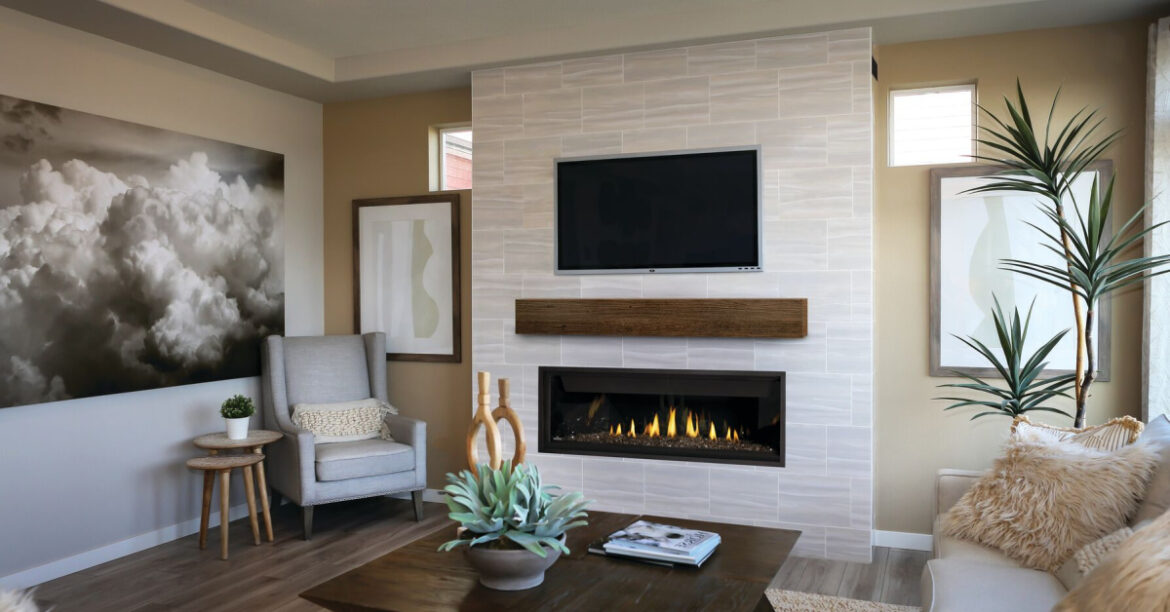
CAN A GAS FIREPLACE CAUSE HEADACHES?
Today’s gas fireplaces operate with a sealed combustion system. This means the venting system provides combustion air from the outside, not your room. This venting system may go through a side wall or up through the roof, or, in the case of a gas insert, it is installed in the existing fireplace’s chimney. Smoke and other by-products from combustion are also sealed within the venting system and are effectively moved outside.
Of course, a blower fan will provide warm air to your room but is never in contact with combustion gases. It’s unlikely that a gas fireplace is going to be the cause of headaches. However, you may experience unpleasant odors if pet hair and/or dust accumulates beneath the fireplace. These odors might cause a headache, as the fan can move those warmed-up smells into the living room. The answer to those unpleasant odors is to keep the compartment beneath the fireplace clean.
CAN A GAS FIREPLACE CAUSE CARBON MONOXIDE?
Whenever something burns, carbon monoxide is present. Direct-vented gas fireplaces use a sealed combustion venting system that expels all combustion by-products to the outside, including carbon monoxide.
However, some older gas fireplaces and all gas log sets installed into a wood-burning fireplace use a different type of vent system that is not entirely sealed up. This “silent killer” is odorless, tasteless, and colorless. The best defense for a homeowner? Have your fireplace professionally serviced regularly, and ensure you have a carbon monoxide detector with fresh batteries.
WHAT CAN I DO WHEN A SMELL COMES FROM A GAS FIREPLACE?
Assuming the smell from a gas fireplace is not the fuel itself, the odds are high that it’s related to pet hair, dust, or dander.
This is especially true when the fireplace is unused for a few months, and the compartment beneath the fireplace needs to be periodically cleaned. With dogs and cats in the house and if the fireplace has been installed on the floor vs. a raised hearth, this can be a common problem, particularly in the fall.
And it should go without saying, but we will anyway: If the odor you’re smelling is gas, DO NOT TURN THE FIREPLACE OR ANY SWITCHES ON. Ventilate the house immediately, shut off the gas supply, and/or go outside to call 911.
When a fireplace is newly installed, odors will likely come from the first few fires. These are solvents and high-temperature paints curing from the manufacturing process. The fix to this scenario is to have those initial burns done during moderate weather when a couple of windows can be opened to effectively clear the room.
CAN A GAS FIREPLACE CAUSE ALLERGIES?
Gas fireplaces are safe, convenient, and very popular today.
Because of the sealed combustion system and the coaxial venting system used in gas fireplaces, the likelihood of a unit causing issues with most common allergies is remote.
Wood-burning equipment differs because of the inherent smoke and the possibility of a moldy wood supply. But with gas, since the fireplace’s glass is gasketed and the venting system is sealed, no room air interacts with the combustion.
So, no smoke or fumes in the house.
The space below the logs and fire is readily accessible and should be kept clean of dust and pet hair. Otherwise, the blower fan will circulate warm air along with the dust and pet hair back into your living room. Since some people with allergies might react to the odors of this warm air and dust, inspecting and cleaning this area regularly is essential.
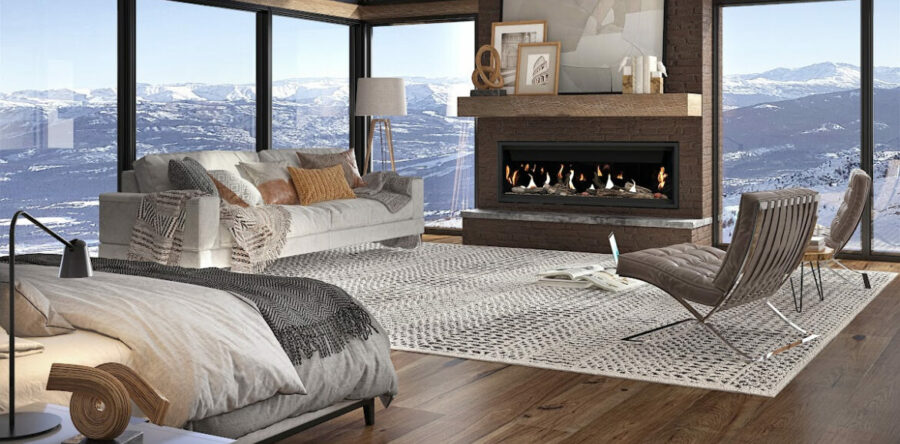

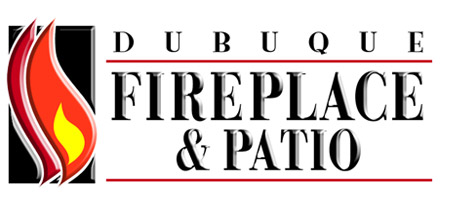
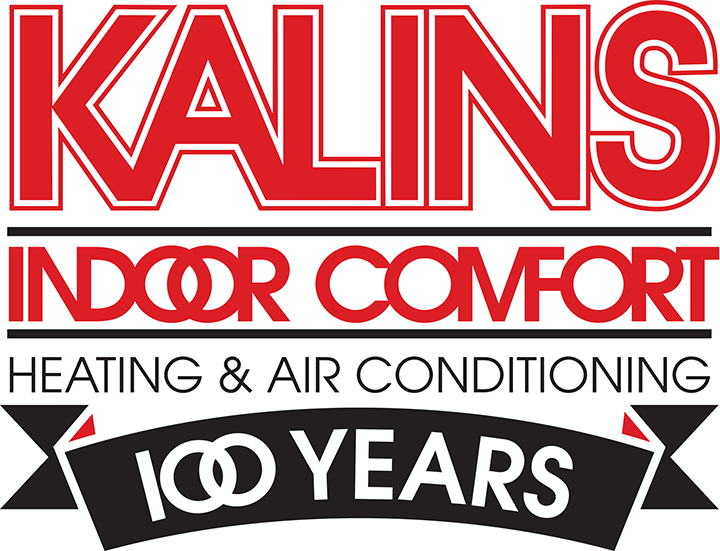

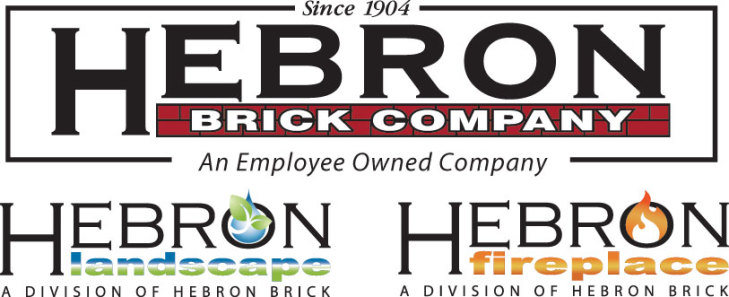
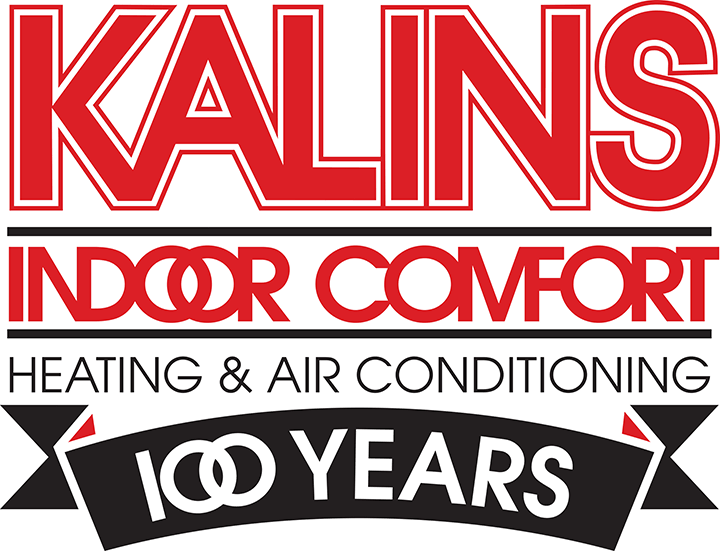



5 Responses